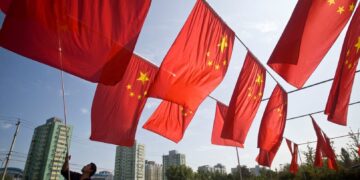Hailed as China’s most significant tax reform in more than two decades, the value-added tax (VAT) was comprehensively implemented as the country’s only indirect tax in 2016, effectively replacing the business tax (BT). The reform is part of Beijing’s efforts to restructure the Chinese economy from one driven by labor-intensive manufacturing to one that is service-oriented by easing the tax burden on service industries.
In 2015, services made up more than half of China’s GDP for the first time, and are growing at a faster rate than any other sector of the economy. The Chinese government expects the VAT reform to further propel growth in services and consumption as the country pivots from the low value-added industries. The broader introduction of VAT is also designed to encourage low-end manufacturers to upgrade their technology and capabilities, and invest in research and development.
China has had a VAT system since the country’s bold reforms and opening up to the world economy in 1979. The tax system underwent a major overhaul in 1994, as VAT was expanded to include the sale of goods, processing, and repair services, while directing more revenue to the central government. The expansion of VAT is expected to reduce tax payments by a total of RMB 500 billion ($77 billion) in 2016, largely at the expense of local governments.
The latest phase of VAT reforms were introduced as a pilot project in Shanghai in 2012 before being rolled out nationwide on August 1, 2013. By the end of 2015, modern services, postal services, telecommunication services, and transportation services were included nationwide under the VAT regime. According to a report by Deloitte Tax Analysis, the Ministry of Finance and the State Administration of Taxation jointly announced in March 2016 that major industries paying BT would be transitioned to the VAT regime. Effective May 1, 2016, the construction, finance, lifestyle, and real estate sectors were introduced to VAT, essentially eliminating BT from China’s tax system.
Key features of the VAT reform
VAT more closely aligns China’s tax system with international standards, though it still maintains unique characteristics and complexities.
Historically, manufacturing and other industrial firms operated under the VAT system, and services fell under BT. This meant service industries faced higher taxes in the form of revenue-based taxes across supply chains, while not benefiting from the deductions allowed by VAT. With this latest reform, service industries enjoy reduced tax rates, as they are only taxed on the value added at each transaction..
Taxable activities are separated into three categories for VAT calculations: supply of services, supply of intangible assets, and supply of real estate. Supply of any service within these three categories falls under the jurisdiction of VAT, unless specifically excluded. Items outside the scope of VAT include insurance compensation and interest accumulated on deposits.
While most services fall under the “supply of services”, the “supply of intangible assets” has a far broader definition in Circular 36 than the previous BT regime. Franchise rights, memberships, and virtual products like internet games and domain names are now explicitly considered intangible assets. As such, it is recommended that businesses review whether VAT now applies to certain assets that were exempt from BT.
Under VAT, businesses are considered either general taxpayers or small-scale taxpayers based on their annual sales. Small-scale taxpayers – those collecting less than RMB 500,000 in revenue – benefit from a lower VAT rate of 3 percent, compared to the 6 to 17 percent levied on general taxpayers, depending on their industry.
While small-scale taxpayers enjoy lower tax rates, they may struggle to compete with larger companies in the long term. Although assessed at a higher uniform tax rate, only general taxpayers are entitled to credit input VAT from output VAT and VAT export exemptions and refunds. The reform rewards large businesses that have complex supply chains and numerous transactions, while also giving them a competitive edge by allowing them to issue special VAT invoices. Special VAT invoices are needed to deduct input VAT, meaning buyers will generally prefer to purchase from entities able to issue invoices to offset their own taxes.
Newly covered industries
The last round of BT to VAT reforms brought several industries under the jurisdiction of VAT. The real estate, construction, finance, and lifestyle services sectors made up 80 percent of total BT revenue before the tax was scrapped. Although the reform broadly aims to reduce corporate tax burdens, in the case of such a sweeping change, there are inevitably winners and losers.
For example, the real estate and construction industries are closely intertwined. Developers can get a VAT input credit for land use rights purchases, and therefore only need to pay taxes on the value they add to the property. However, those in the construction industry have fewer opportunities to claim VAT credit, since labor costs are not deductible and several raw materials, such as sand and gravel, are not considered to involve any value added.
When analyzing the impact of VAT on business operations in China, it is essential to take an integrated approach that includes the implications not only to one’s direct business scope, but also to effects on suppliers and customers. The specificities that VAT levies often differ based on type of transactions within a given industry. Although VAT is now universal as an indirect tax in China, the system remains complex. Careful consideration of its effects on tax optimization and compliance is vital to healthy business operations in China.
About the author: This article first appeared in China Briefing by Dezan Shira & Associates, a specialist foreign direct investment practice, providing corporate establishment, business advisory, tax advisory, and compliance, accounting, payroll, due diligence, and financial review services to multinationals investing in China, Hong Kong, India, Vietnam, Singapore and the rest of ASEAN. For further information, please email [email protected] or visit http://www.dezshira.com/.






























